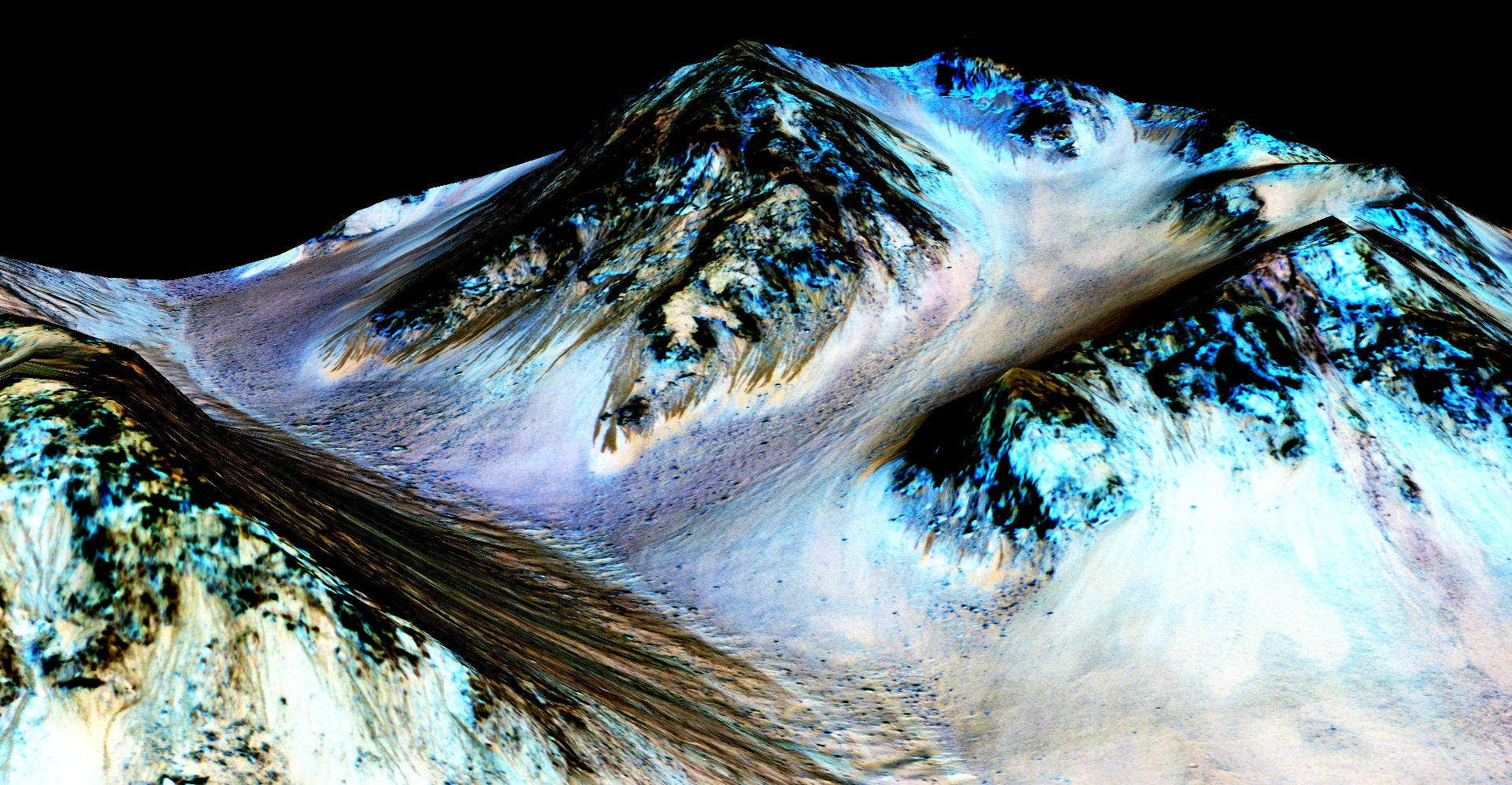Nasa discovers flowing water on Mars, but contamination fears put further investigation in doubt
Fears that a Mars rover carrying contaminants from Earth could pollute the water streaks mean investigation may have to wait

Your support helps us to tell the story
From reproductive rights to climate change to Big Tech, The Independent is on the ground when the story is developing. Whether it's investigating the financials of Elon Musk's pro-Trump PAC or producing our latest documentary, 'The A Word', which shines a light on the American women fighting for reproductive rights, we know how important it is to parse out the facts from the messaging.
At such a critical moment in US history, we need reporters on the ground. Your donation allows us to keep sending journalists to speak to both sides of the story.
The Independent is trusted by Americans across the entire political spectrum. And unlike many other quality news outlets, we choose not to lock Americans out of our reporting and analysis with paywalls. We believe quality journalism should be available to everyone, paid for by those who can afford it.
Your support makes all the difference.Nasa may have recently answered a decades-old question about flowing water on Mars, but now they face a new issue - how to research the nature of this water without contaminating it.
Nasa's state-of-the-art Curiosity rover, currently on Mars and around 30 miles from one of the most promising areas for research of the water, would be in the best position to investigate the nature of the water further.
However, Curiosity is not sterile - it may be carrying bugs and microorganisms from Earth, which would potentially contaminate the water, disrupting future scientific investigations and breaching regulations on polluting other planets.
Tthe Committee for Space Research specifies that extraterrestrial landers looking for life must be very clean, to avoid any Earthly dirt contaminating the foreign planet.
Rovers going to areas on Mars with damp recurring slope lineae (RSL) - the tell-tale streaks that prove liquid water flows on Mars - will have to be sterile, to stop any potential contamination.
As reported by The Guardian, Nasa's planetary science division director Jim Green thinks that the ultraviolet light on Mars may have killed any microorganisms that Curiosity may have brought with it, making it sterile and suitable to approach the RSLs - but other research suggests that the dust on the planet's surface could have protected the microbes and made it easier for them to survive.
A joint European and Russian Mars mission carrying a sterile rover that will drill into the planet's surface is planned for 2018, so this could potentially shed some more light on the makeup of the Martian surface.
Until then, debates about what Curiosity can do to investigate the water will go on.
Speaking to The Guardian, Andrew Coates, from University College London's Mullard space science laboratory, said "heated discussions" about whether Curiosity will even be able to go near the RSLs will come in the next few months.
Join our commenting forum
Join thought-provoking conversations, follow other Independent readers and see their replies
Comments